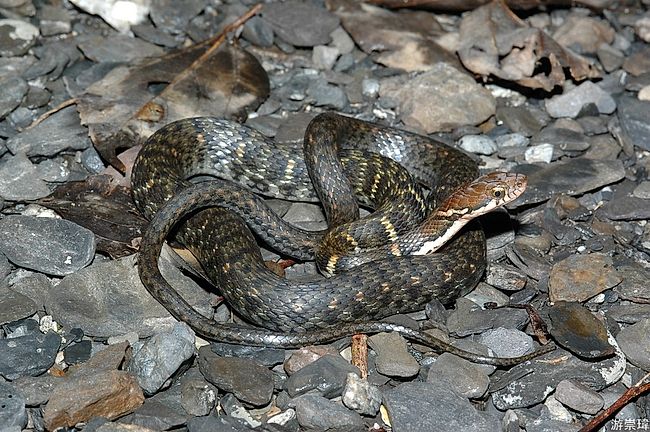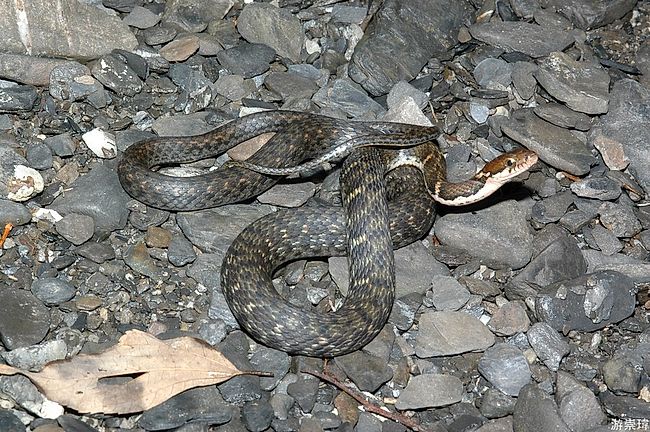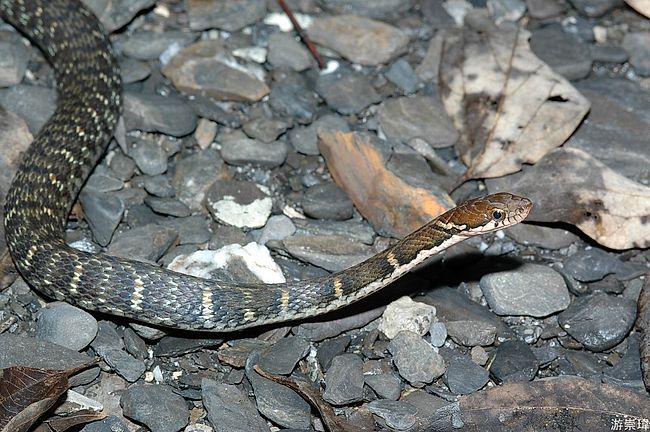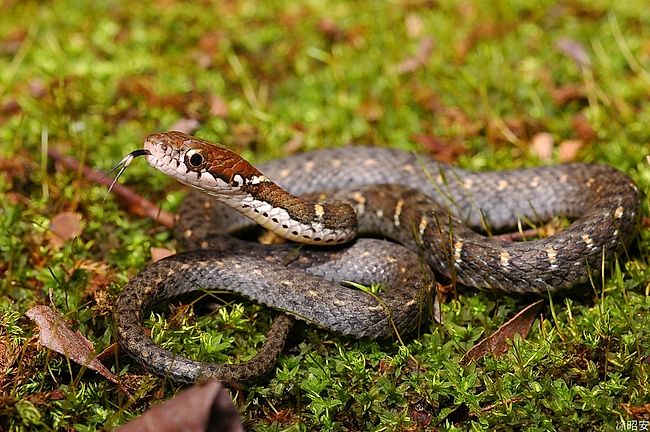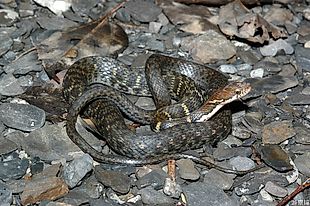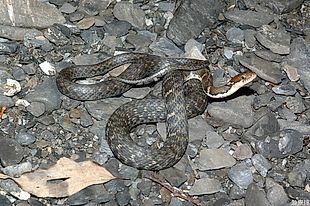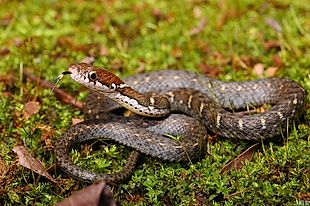Hebius sp.
Paiwan Keelback
排 灣腹鏈 (pai2wan1fu4lian4she2)
Status: Not Protected
Non-venomous
This is a recently discovered, yet undescribed species pending assignment of a scientific name.
The first publication to portray this species in more detail is the following new field guide on the reptiles & amphibians of Taiwan:
All information below was taken from this book.
More Photos
Family
Colubridae, subfamily Natricinae
Max. length
89 cm
Occurrence in Taiwan
Currently, the only records are from a few small locations in southern Taiwan, between 500 and 1300 meters altitude.
Global Distribution
Endemic to Taiwan
Description
With a total length up to 89 cm, this medium-sized snake is the largest of the known keelback species in Taiwan. The background color of the body is grey to olive, while the head is medium brown. There are 19 rows of dorsal scales. The front third of the body bears incomplete yellow stripes; including a conspicuous "V"-shaped stripe on the nape of the neck. The ventral scales are bright yellow.
Biology & Ecology
Like most natricine snakes, the cathemeral (diurnal and nocturnal) Paiwan Keelback can be found close to streams and ponds, as well as in wetlands, where it preys mostly on frogs and lizards. When approached, the snake displays fierce defense behavior. The female is markedly bigger than the male. Judging from the hatchlings observed in May and June, it is assumed that this species starts mating in spring.
Etymology
Hebius: Derived from the Japanese word "Hebi", which means "snake".
The English and Chinese common name "Paiwan Keelback 排灣腹鏈蛇 (pai2wan1fu4lian4she2)"
was chosen in honor of the aboriginal Paiwan tribe in whose vicinity the snake was
discovered.
sp.: This species is currently being described. No proper scientific name has been selected yet.




